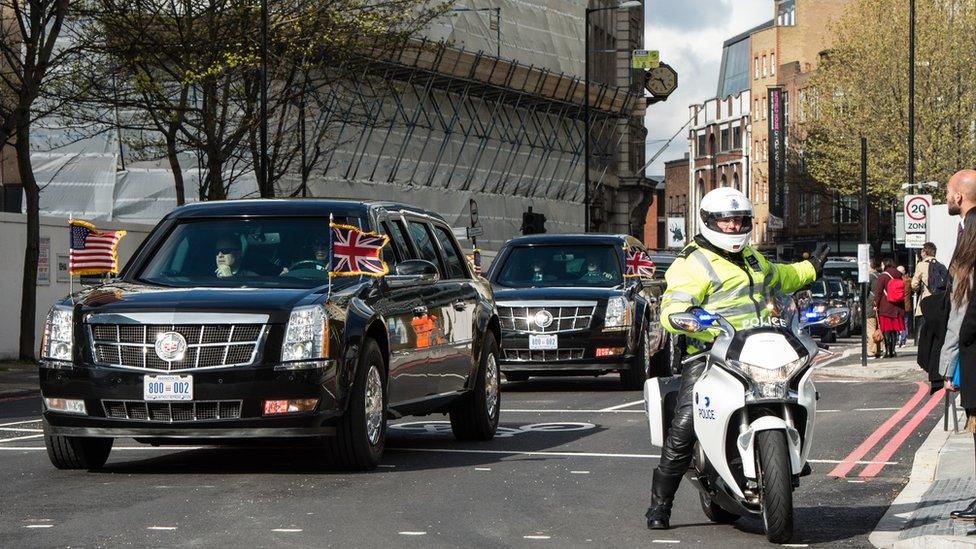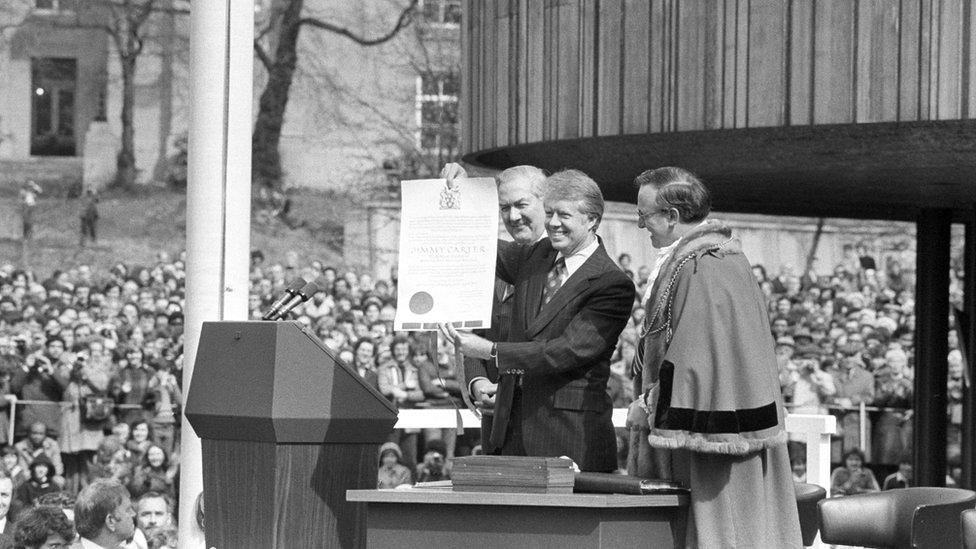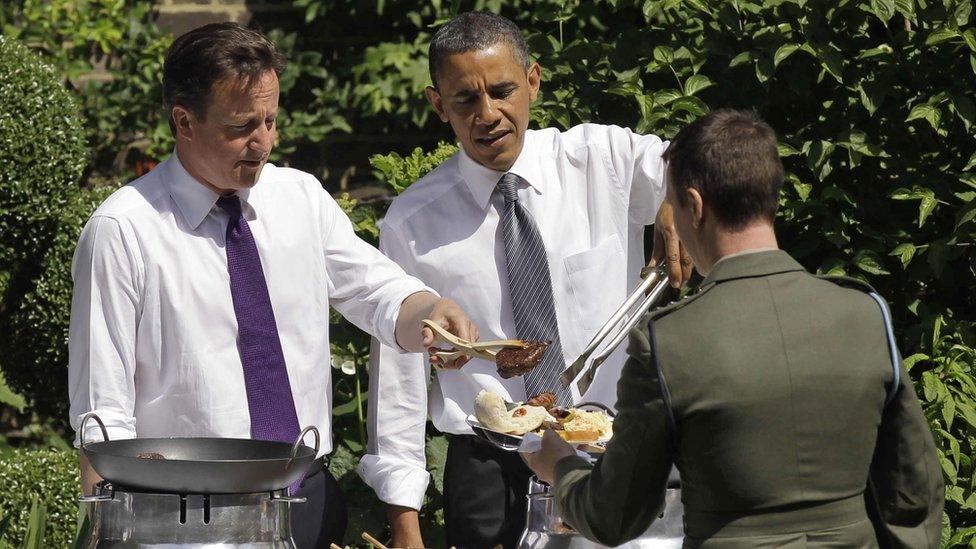How Trump's UK visit will be different to those of other US presidents
- Published

Donald Trump's trip to the UK will be the 12th by a US president. But this working, not state, visit is expected to be different to those that have gone before.
In 1977 Jimmy Carter came to Britain on his first overseas trip as president. His main aim was to attend the G7 summit in London, but he also chose to visit Newcastle.
The city had taken part in a scheme designed to build bridges between the United States and the rest of the world. So the newly elected leader of the free world decided to conduct his first act of global diplomacy from a podium outside the concrete splendour of Newcastle Civic Centre.
He was given the freedom of the city by the mayor. And when the peanut farmer from Georgia stepped up to the microphone, he greeted an adoring crowd of 20,000 people thus: "Howay the lads! I am grateful to be a Geordie now."
The local newspaper, the Chronicle, reported: "They packed the airport. They packed the streets. They packed the area outside the Civic Centre and they opened their arms to him. And he loved it. A great smile spread across his face... as he was greeted by crowds waving both the Union Jack and the Stars and Stripes."
This was how it used to be: British crowds cheering US presidents.

President Carter was made an honorary freeman of the city of Newcastle in 1977
When JFK came in 1961, half a million people lined the route between London airport and the west end to catch a glimpse of him and his wife Jackie Kennedy. The scale of the public adulation was in part due to the fact that US presidents enjoyed great popularity in Britain: they were political show business and our closest allies in recent wars.
They also came to the UK more rarely. The first president to visit was Woodrow Wilson in 1918 during the post-World War One peace talks. But it was not for another 27 years - and after another world war - that a second US president came to our shores, in 1945.
And all Harry S Truman did was visit King George VI on a naval cruiser anchored in Plymouth harbour. Dwight D Eisenhower did not come until 1959. So, only three presidential visits in 40 years. Lyndon Johnson never came, nor did Gerald Ford.
US presidents also enjoyed a warm relationship with the Royal Family. Eisenhower was a particular favourite of the Queen, who invited him to stay at Balmoral - the only president to do so.
Like Donald Trump, "Ike" also owned property in Scotland: not a golf course but an apartment at Culzean Castle on the Ayrshire coast which had been given to him by the owners, in recognition of his role as supreme allied commander during World War Two.
Ronald Reagan also got on well with the Queen, who in 1982 personally invited him to stay at Windsor Castle and go for a ride in the Great Park. In 1994, Bill and Hillary Clinton were honoured with a sleepover on board the royal yacht Britannia in Portsmouth.

Huge crowds flocked to see President Kennedy during his 1961 visit
In 2003 George Bush spent the night at Buckingham Palace - the first president to do so since Wilson in 1918. In contrast, Donald Trump is expected to get a cup of tea when he passes through Windsor on Friday.
Nor may President Trump receive quite the same political welcome as his predecessors. He will not attend cabinet as Bill Clinton did in 1997 shortly after Tony Blair was first elected prime minister. He will not get to flip burgers in the Downing Street garden or address both houses of parliament, as President Obama did in 2011.
Instead, he will make do with a short visit to the prime minister's country residence, Chequers, like Richard Nixon in 1970. This will be very much a working visit. A full state visit may have been offered but there is no date in the diary for when it may happen.
Of course, presidential visits do not always go smoothly. There was a private diplomatic row in 1982 when the White House delayed replying to the Queen's invitation to Ronald Reagan to stay at Windsor because his wife Nancy's astrologer was worried about overseas travel.
In 1997 I watched as Bill Clinton's long motorcade was divided in two when London's Tower Bridge was opened to allow through a Thames sailing barge - much to the consternation of the security men.

Barack Obama took part in a memorable barbecue in the No 10 garden in 2011
And in 1977, after a banquet at Buckingham Palace, President Carter decided to bid farewell to the Queen Mother by kissing her full on the lips, something that apparently had not happened since King George VI died in 1952. "I took a sharp step backwards," she recalled later. "Not quite far enough."
So huge efforts will be made to ensure that President Trump's trip goes smoothly. Many demonstrations have been planned, but the huge security operation surrounding his progress from London to Chequers to Windsor to Scotland - largely by air - means that he may not get too close to the protests.
Much harder to cover up will be the fundamental policy differences between the US and British governments.
Since Donald Trump took office, Theresa May has publicly disagreed with him over his decision to impose trade tariffs, abandon the Iran nuclear deal, move the US embassy to Jerusalem, order a Muslim travel ban and retweet anti-Muslim messages from a British far-right group.
British ministers and officials will do their best to welcome Mr Trump but even they are now talking about the need to respect the office of the presidency rather than the current incumbent as an individual. So the president's trip this week will test a relationship that has recently become much harder to keep special.